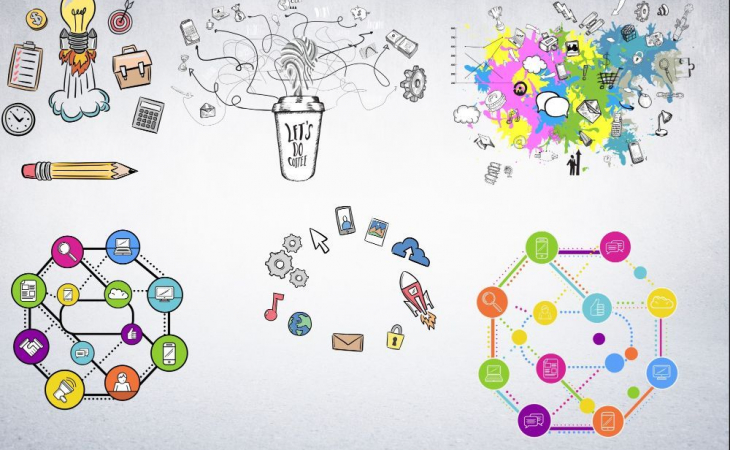Communication Design: The Art of Conveying Messages Aptly
Share

It encompasses a wide range of mediums, including graphic design, typography, photography, illustration, and multimedia. At its core, communication design seeks to bridge the gap between information and understanding, transforming complex concepts into visually engaging and accessible content.
Using Communication Design to Convey Complex Information
In a world full of information, being able to explain complicated ideas in easy-to-understand ways is really important. Communication design excels in this regard, utilizing a variety of visual techniques to simplify intricate concepts. Through the strategic use of typography, colour, imagery, and layout, designers can organise information in a coherent and intuitive manner, making it easier for audiences to comprehend and retain.
Infographics, for example, are a popular tool in communication design for presenting data and statistics in a visually appealing format. By combining text, charts, and graphics, infographics provide a succinct overview of complex information, allowing viewers to grasp key insights at a glance. Similarly, visual storytelling techniques, such as timelines and process diagrams, help break down intricate narratives into manageable segments, enhancing audience engagement and comprehension.
Our various campuses located across India are geared towards preparing individuals for a career in communication design : Design Colleges in Mumbai, Design Colleges in Kolkata, Design Colleges in New Delhi, Design Colleges in Bengaluru
Tips for Effective Communication Design
Achieving effective communication design requires careful consideration of various elements and principles. Here are some pointers to elevate your design:
- Understanding the demographics, preferences, and needs of your target audience is essential for crafting relevant and impactful designs. Conduct market research, surveys, and user testing to gather insights into your audience’s interests, behaviours, and pain points.
- Avoid clutter and complexity by focusing on essential information and using clean, minimalist design elements. Simplify your messaging to convey your core ideas concisely and clearly.
- Establish a clear hierarchy of information to guide viewers’ attention and prioritize key messages. Organize content in a logical sequence, with important information emphasized through size, colour, or placement. Use headings, subheadings, and bullet points to break up text, allowing viewers to quickly grasp the main points of your message.
- Maintain consistency in typography, colour palette, and visual style to create a cohesive and unified design language. Develop brand guidelines or style guides to establish standardized elements such as logo usage, font choices, and colour schemes.
- Incorporate ample whitespace to improve readability and create visual breathing room within your designs. Whitespace, also known as negative space, helps to reduce visual clutter and draw attention to key elements of your design.
By applying these principles, designers can create communication materials that not only grab attention but also resonate with audiences on a deeper level. Effective communication design is not just about aesthetics; it’s about creating meaningful connections and inspiring action through thoughtful and intentional visual storytelling.
The Importance of Effective Communication Design
Effective communication design not only facilitates understanding but also fosters emotional connections and drives engagement. Consider the impact of a well-designed poster advocating for environmental conservation or a compelling social media graphic promoting a charitable cause. These visual messages have the power to evoke empathy, inspire action, and mobilize communities towards positive change.
Moreover, in the realm of business and marketing, communication design serves as a linchpin for brand differentiation and competitive advantage. Companies invest significant resources in crafting visually captivating advertisements, packaging designs, and digital content to stand out in crowded marketplaces. A memorable logo or a striking visual campaign can leave a lasting impression on consumers, influencing their purchasing decisions and brand perceptions.
Furthermore, effective communication design plays a vital role in education and knowledge dissemination. From textbooks and instructional materials to interactive e-learning platforms, well-designed educational resources enhance student engagement and comprehension. Visual aids, such as diagrams, illustrations, and videos, make complex subjects more accessible and facilitate active learning experiences.
Join intuit lab
In the realm of public policy and advocacy, communication design serves as a catalyst for social change and civic engagement. Infographics, posters, and digital campaigns raise awareness about pressing social issues, mobilize grassroots movements, and amplify marginalized voices. By harnessing the power of visual storytelling, activists and organizations can galvanize public support and drive momentum for meaningful policy reforms.
In conclusion, communication design serves as a powerful tool for conveying messages effectively in today’s visually-driven world. By harnessing the principles of design and leveraging various visual techniques, designers can transform complex information into compelling and accessible content. From simplifying data to shaping brand identities, effective communication design plays a vital role in shaping our understanding and perceptions of the world around us. As we continue to navigate the digital landscape, the importance of communication design in facilitating meaningful connections and driving positive change cannot be overstated.

